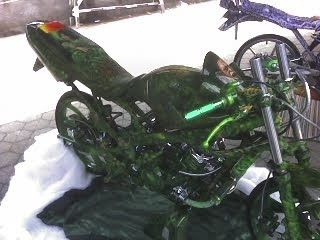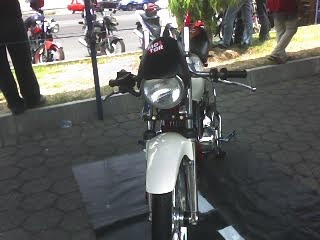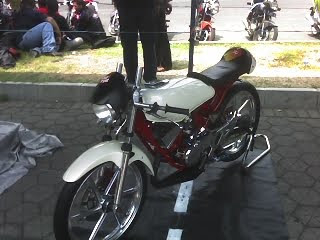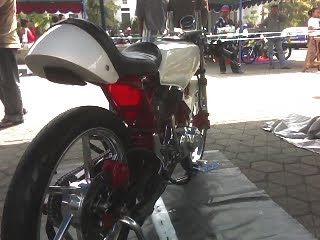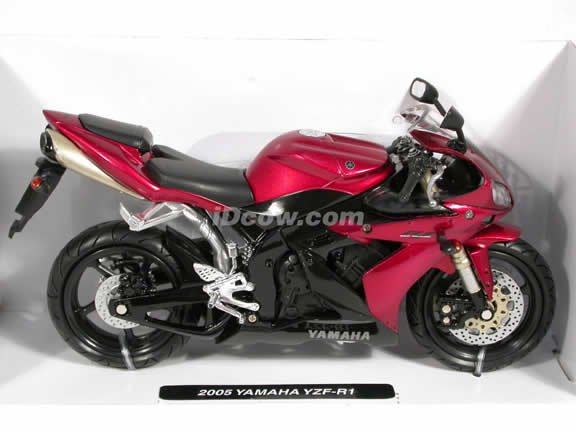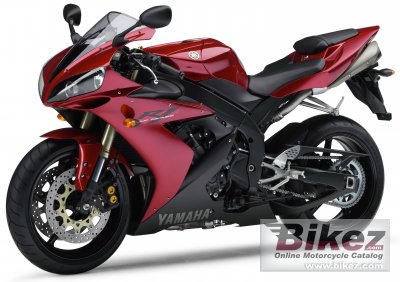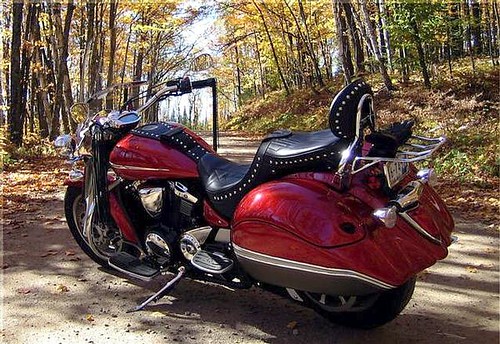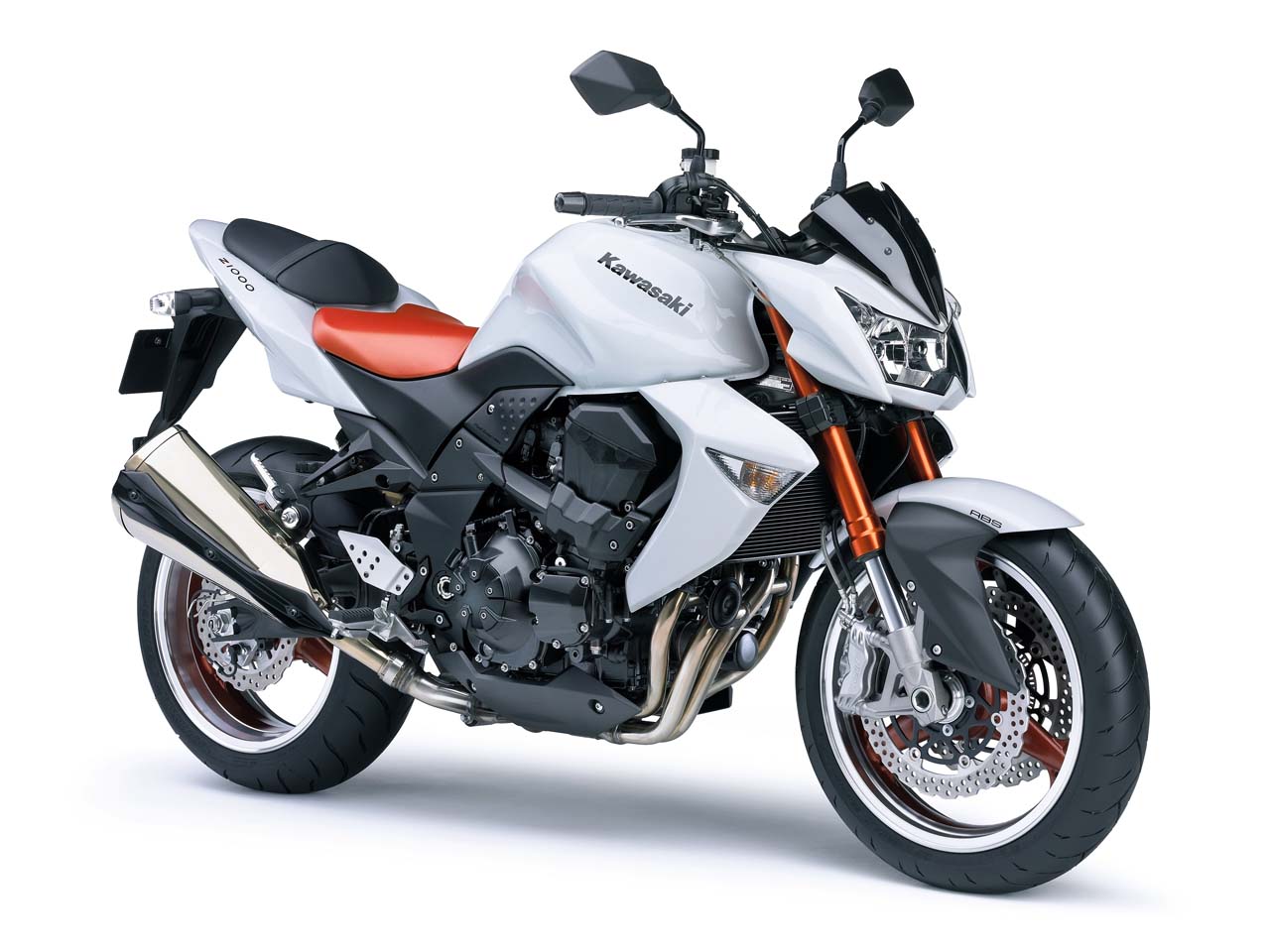But the big news in the intake tract are the variable-height velocity stacks of the YCC-I system. The Yamaha Chip Controlled Intake optimizes performance by utilizing a long 140mm velocity stack that enhances torque at lower revs. Then, once past 10,400 rpm, the trumpets squeeze up next to the throttle bodies to produce a short 65mm length for accentuated top-end pull.
Ripping up Laguna's front straight tucked in behind the windscreen and rowing through the gears, which retain the same ratios from last year, is truly great fun. The new engine (but with the same bore and stroke) is significantly stronger in the mid-range, which was a bone of contention we had with the 2004-2006 R1. A lack of snort is no longer the case. It pulls like a good 1000 should clear past 10 grand, pulling even harder through to the 13,750-rpm limiter. Brake markers come at you in unrelenting fashion, and power wheelies are merely a side effect of shifting. We look forward to getting this baby on the dyno.
Having that ripper of a motor makes charging from corner to corner a real blast, but at some point you have to slow down. That's where the slipper clutch and new 6-piston brakes come in handy. Thanks to the addition of the slipper clutch, previously found only on the '06 YZF-R1 LE, downshifting is done in carefree fashion, since it keeps the bike much more stable during deceleration. One of the many notable improvements not inside the engine compartment is the all-new braking system. The combination of radial-mount six-piston Sumitomo calipers, 310mm rotors, (reduced in size by 10mm versus '06), is a very competent package. Initial bite from the radial-pump lever is not too abrupt, but the binders are very powerful for standard units and offer up a lot of useful feel at the lever - one of our few gripes with the previous brakes. A single-piston pin-slide caliper and single disc on the back was only used to help keep the front tire on the track under acceleration.
There's more to this new R1 than mondo motor and brakes, so take a deep breath and shake off the goose bumps as we strip her down and look at what's going on beneath the racy new bodywork. Without a doubt it has a sharper edge to it now. An edge that Yamaha believes will pay dividends at the track. The all-new frame has been redesigned with 50% less rigidity on the vertical axis, 25% less torsional rigidity and 24% less sideways rigidity, with strategically located reinforced ribs inside the 1mm thinner perimeter side walls. But what does that all mean?
The latest incarnation of the YZF-R1 utilizes a new frame designed to create less rigidity and greater handling feel for the rider.
The latest incarnation of the YZF-R1 utilizes a new frame designed to create less rigidity and greater handling feel for the rider.
The goal is to provide a less stiff and more rider-friendly frame which works in concert with changes to the suspension components and steering geometry to improve front-end feel. Since we didn't have a '06 R1 to compare back-to-back, it's hard to report exactly how much difference this made. What we can say is that the R1 from last year was the heaviest of the bunch, had the longest wheelbase and felt both long and heavy in the turns compared to its competition. It just didn't exhibit very precise feel or offer up great front-end feedback, but it was very stable. In contrast, the 2007 R1, despite retaining the same wheelbase (55.7 inches) and rake (24-degrees), feels lighter and is very responsive to rider inputs, yet the front end is especially sure footed.
The emphasis on improving feedback from the chassis doesn't end at the frame. The fully adjustable 43mm inverted Kayaba fork features an increased spring rate, lighter aluminum rods and reduced thickness in both inner and outer fork tube walls. The triple clamp has a reduced fork offset, down from 30mm to 25mm and an accompanying increase in trail from 97mm to 102mm, which may partially account for the greater feedback from the front wheel.
After getting a taste for the base settings when I rode during the first two sessions I inherited a nearly perfectly set-up machine from a similar-sized test subject. I was pleased to find out that these bikes can easily be tuned to suit anyone's needs. Greater traction and feedback from the rear end is offered by the 16mm longer swingarm that is 30% stiffer torsionally but slightly less rigid laterally. It is similar in appearance to the '06 unit but doesn't look as sexy.
Before the end of my third session I was convinced this particular R1 couldn't get much better. The suspension worked great, so I set out to turn as many laps as I could endure, which was usually about 30 minutes per stint over the next four hours.
The Pirelli Diablo Corsa tires clung to every inch of the resurfaced Laguna tarmac, with the rear occasionally breaking loose under aggressive acceleration or overly exuberant braking. In either case, the slide was always predictable and never once gave me any reason to doubt it had a higher traction envelope than I was ready to explore. The tires received universal praise from the attending journalists, much to the pleasure of Pirelli's Director of Marketing, Chris Wall.
The nimble R1 is well-suited to the Laguna Seca track aided in part by the new Pirelli Diablo Corsa tires which received uniform praise from the moto-journos in attendance.
The nimble R1 is well-suited to the Laguna Seca track, aided in part by the new Pirelli Diablo Corsa tires, which received uniform praise from the moto-journos in attendance.
Choosing to hold the U.S. intro at Laguna Seca was a perfect fit for an unveiling of this caliber. The only track in the U.S. worthy of hosting MotoGP, the habitat of the most notoriously wicked sportbikes on earth, was our proving ground for the day. Unraveling the 2.2-mile, 11-turn Mazda Raceway at Laguna Seca proved without a doubt that the R1 has the chassis and turning prowess to back up what the motor brings to the table.
This R1 is actually very easy to ride fast. It's a combination of many desirable individual components which perform even better as a collection than they do on their own. It's responsive to rider input but very stable at the same time. The only hint of unwanted behavior was a tendency to wag its head under acceleration, even though a steering stabilizer is part of the stock equipment. It seemed to happen with regularity after I got fatigued. The bike is otherwise an absolute joy to ride fast, and that is exactly what Yamaha was gunning for.
I have never really been a fan of the R1 riding position but this one seems to suit me better. The previous models with high pegs and low bars appealed most to taller riders. Plenty of people got along fine with that setup, but it was always a bone of contention in my notebook. Things appear to be more humane this time around. My legs weren't as cramped up, and the bars position the rider in a less aggressive stance. This, along with the 10mm taller windscreen and decent seat, should be a nice addition to the multitude of riders who will use the R1 as a commuter.
Public opinion is still out on the appearance of the new R1, but I think it looks pretty damn good. When our First Look article was released there was disappointment around the office that it didn't raise the styling bar substantially. Yamaha chose to return to the function-over-form design mentality and, frankly, the bike is better for it. The more I rode and touched it, the more I liked it. The larger ram-air intakes look good beneath the traditional R1 cat-eye headlamps, and the rest of the front cowling is quite similar to the previous bike, which is in contrast to the all new R6-inspired side fairing panels. The R1 now incorporates channels in the top of the side fairing, like the R6, which create a vacuum-effect that helps the fast-flowing air passing through to extract hot air from the 40% larger side vents adjacent to the engine as it exits by the riders knees. The result is a claimed 8% more efficient cooling effect over the previous ventilation system. The curved radiator has been updated too. It is more densely packed with cooling fins, resulting in a 13% increase in cooling surface area to reduce power-robbing heat.
A pair of 310mm rotors are grabbed by radial-mounted six-piston calipers provide the braking power up front with Ken using the single-piston disc configuration out back to help keep the front wheel on the ground.
Hutch found the new R1's riding position to be an upgrade from previous models, with the rider placed in a less aggressive stance. The comfier ergos also make it a more comfortable fit for the casual street riding most people will encounter when they aren't on the pulling wheelies down the home straight of the USGP venue.
The cover for the 4.75-gallon fuel tank is similar in design to previous, with the curves and angles having been toned down a bit, but it still works well as grip points for the rider's knees. Follow the racy lines back across the seat and on to the pillion area and you will know you are still looking at an R1. The rear end, however, looks significantly different. Instead of a wide and flat platform for the passenger seat, the new bike has much more narrow bodywork compared to the previous design. The exhaust pipes are canted out and up at an angle compared to last year's bike while heat shields make up the additional width left open from the thinner seat cowling. The exposed surface area should keep your passenger's buns warm and toasty. The larger and more visible taillight is nestled between the pipes. Is this an aesthetic improvement? That's still up for debate, but it does look good and it retains a semblance of the previous R1 style. There's no doubt in my mind that there is enough shiny bodywork to keep owners buffing and polishing in pure carnubial bliss for years to come.
The question everyone is probably asking is whether or not this is the Yamaha that will return the company to the elite status of the original R1. My initial impression is definitely positive, and the 2007 Yamaha YZF-R1 is undoubtedly a legitimate contender. It has all the necessary components to be a winner, but things always seem better in the vacuum of a single-bike press launch. The issues of the past have been addressed, starting with a major change in Yamaha's approach to engine design. Add into the equation that this bike feels lighter and is just as at home dragging pegs across an apex as it is doing second-gear roll-on wheelies, (it would easily pull third gear heading up the hill to the Corkscrew) all while providing a more comfortable riding position and rider-friendly chassis means it will have no excuses this time out.
According to the literature that we received at the intro, Yamaha's goal was simple: "Build on the R1's heritage of sexy style while transforming it into the ultimate cornering machine with the best 1000cc engine performance." Since the bike handles fantastic and has the motor to get it to the next turn in a hurry, there's no reason to doubt the R1 has a shot at living up to the hype once it arrives in showrooms this December at a base price of $11,599.
The mob is still undecided regarding the new R1 s looks with the 07 design sporting larger ram-air intakes and new R6-inspired side fairing panels.
The mob is still undecided regarding the new R1's looks, with the '07 design sporting larger ram-air intakes and new R6-inspired side fairing panels.
There is no doubt this bike is going to be a success in the showrooms. Racetrack victories also are promising. Yamaha has taken lessons learned from some of the best racers in the world and incorporated that into this design. It will continue to be a force in World Superbike with Noriyuki Haga and Troy Corser at the controls, and the arrival of this all-new R1 coincides with Yamaha's return to the premier class in the AMA Superbike series. Eric Bostrom and Jason DiSalvo will fight the good fight in Superbike, while Ben Bostrom attempts to bring Yamaha a second consecutive Superstock championship.
This all sets the stage for what is, in our opinion, the most important measuring stick of all - the chance to win MotorcycleUSA's 2007 Superbike Smackdown. The R1 is one of two all-new open-class machines unleashed in 2007 (including the all new Suzuki GSX-R1000), and with the other two contenders having been refined last year, it means the battle should be closer than ever be. The 2007 Yamaha YZF-R1 has arrived and it is screaming for vengeance.

yamaha yzf r1 2007

yamaha yzf r1 2007

yamaha yzf r1 2007
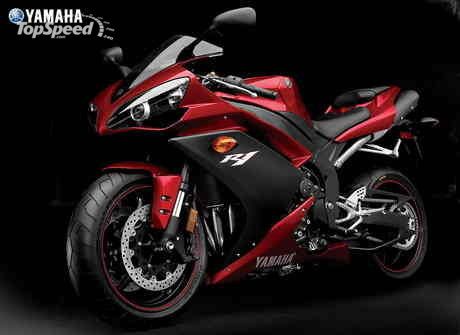
yamaha yzf r1 2007
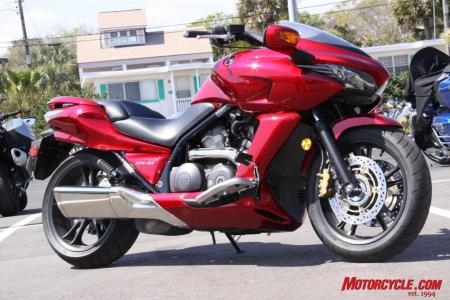 Honda 2009 bikes
Honda 2009 bikes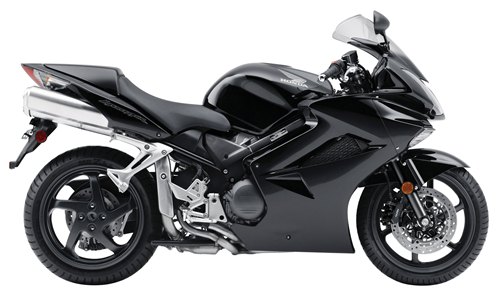 Honda 2009 bikes
Honda 2009 bikes Honda 2009 bikes
Honda 2009 bikes






